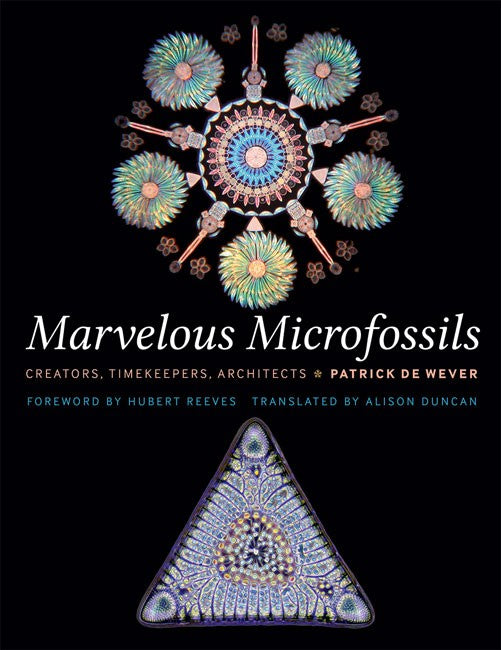Microfossils- the most abundant, ancient, and easily accessible of Earths fossilsare also the most important. Their ubiquity is such that every person on the planet touches or uses them every single day, and yet few of us even realize they exist. Despite being the sole witnesses of 3 billion years of evolutionary history, these diminutive fungi, plants, and animals are themselves invisible to the eye. In this microscopic bestiary, prominent geologist, paleontologist, and scholar Patrick De Wever lifts the veil on their mysterious world.
Marvelous Microfossils lays out the basics of what microfossils are before moving on to the history, tools, and methods of investigating them. De Wever describes the applications of their study, both practical and sublime. Microfossils, he explains, are extremely useful in age-dating and paleoenvironmental reconstruction, which are the bases of multi-billion-dollar investments in the oil, gas, and mining industries. He shares the stories of how microfossils made the Chunnel possible and unmasked perpetrators in jewel heists and murder investigations. Such practicalities aside, de Wever reveals that microfossils also created the stunning white cliffs on the north coast of France, graced the tables of the Medici family, and represent our best hope for discovering life on the exoplanets at the outer edges of our solar system.
Describing the many strange and beautiful groups of known microfossils in detail, De Wever combines lyrical prose with hundreds of arresting color images, from delicate nineteenth-century drawings of phytoplankton drafted by Ernst Haeckel, the ""father of ecology,"" to cutting-edge scanning electron microscope photographs of billion-year-old acritarchs, the nature and functions of which remain elusive despite technological advances. De Wevers ode to the invisible world around us allows readers to peer directly into a microcosm that holds the keys to inquiries so massive that they traverse eons of geologic time to illuminate how life arose on Earth.

